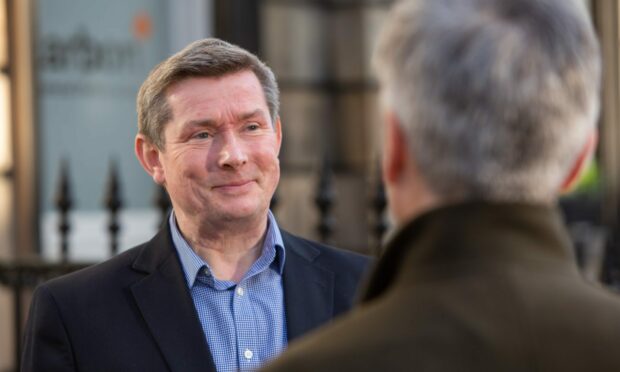Rising interest rates, inflation and Scottish tax changes are squeezing many a household budget. Here’s why.
Last week’s increase of 0.5% in the Bank of England base rate to 3.5% came as no surprise, as markets have been pricing this in for some time.
In fact, expectations are that the UK base rate will peak at between 4-5%, so we should brace ourselves for further fiscal tightening in the new year.
When you’re in the eye of the storm, it’s difficult to see a way out, but even the worst storms pass eventually.”
Although the rate rise was widely anticipated, it’s still a further blow to hard-pressed borrowers who have seen the cost of variable rate mortgages rise on nine separate occasions in the past year, from the historically low 0.1% to the current 3.5%.
The average two-year fixed deal cost under 2.5% a year ago and will now cost 5.84%.
Interest rates are central banks’ main tool to control inflation.
Treading a fine line
The reality is that any rate rise typically takes nine months to feed through the economy and thus the Bank of England has to tread a very fine line between curbing consumption now and choking off any recovery from the imminent recession in the latter part of 2023.
The energy element of inflation is forecast to be much less of a problem, with the annual rate predicted to fall rapidly from its current level during 2023.
Many economists think we have now passed the peak inflation number following this month’s modest fall from 11.1% to 10.7%.
UK rates have been on a very similar trajectory to those in the US and Europe.
Ultimately, the UK can’t act unilaterally on rates as there is global competition for capital.
Higher interest rates normally make debt-free savers happy but, with double-digit inflation ravaging even the most attractive savings account returns, no one is feeling well off just now.
The highest interest rates since the global financial crisis in 2008 and stubbornly high and painful inflation mean many households will find this the most financially challenging festive season for a long time.
New tax rates for higher earners
As if this backdrop isn’t tough enough, last Thursday saw the Scottish Government announce tax rises,
These will hit higher and additional rate income taxpayers via a double whammy of a 1p tax rise to both brackets – 42p and 47p respectively – plus a lowering of the threshold for the additional rate from £150,000 to £125,140.
These rates of tax apply to both earned income and rental from property.
The rate increases for Scottish income taxpayers are in addition to the lower starting threshold for a higher rate tax of £43,662, compared with the UK threshold of £50,270.
The Scottish income tax increases announced in the Scottish budget come hot on the heels of changes to the UK-controlled exemptions and allowances for capital gains and dividend income.
These will be less generous from April next year.
One further budget announcement that could make life more difficult for us all from April 2023 is there will be no cap on locally determined rates of council tax.
Continuing the trend of making second home ownership and buy-to-let even less attractive in Scotland, the additional dwelling supplement element of land and buildings transaction tax (formerly stamp duty) is being increased by 50% to 6% of the purchase price from later this week.
Paying the price
We knew there would be a price to pay for the disruption to our economy caused by the global pandemic, when huge swathes of the workforce were furloughed for months, swiftly followed by the dreadful war in Ukraine.
The full extent of that price is now apparent. When you’re in the eye of the storm, it’s difficult to see a way out, but even the worst storms pass eventually.
Barry O’Neill is an investment director for Carbon Financial Partners in Aberdeen.


Conversation